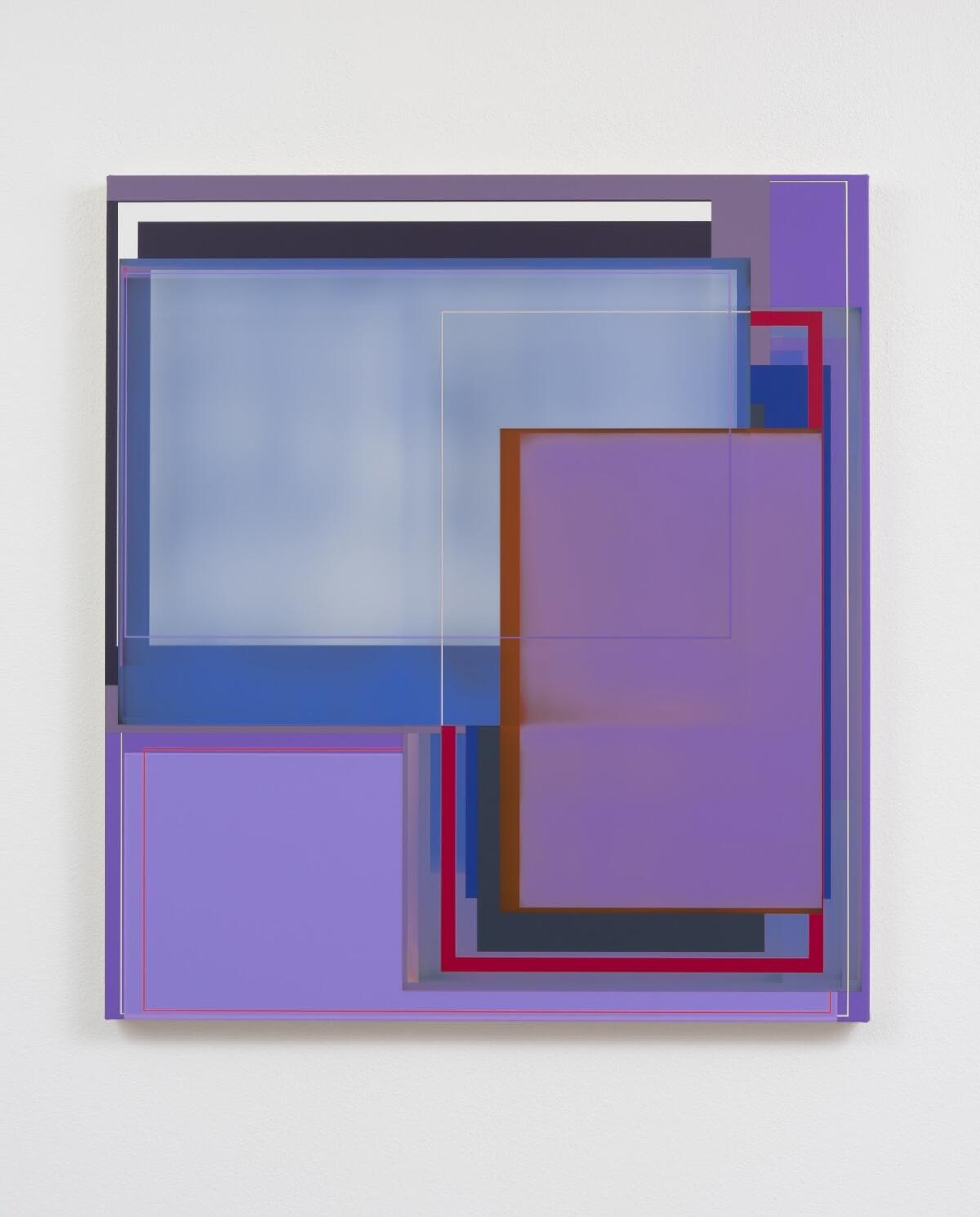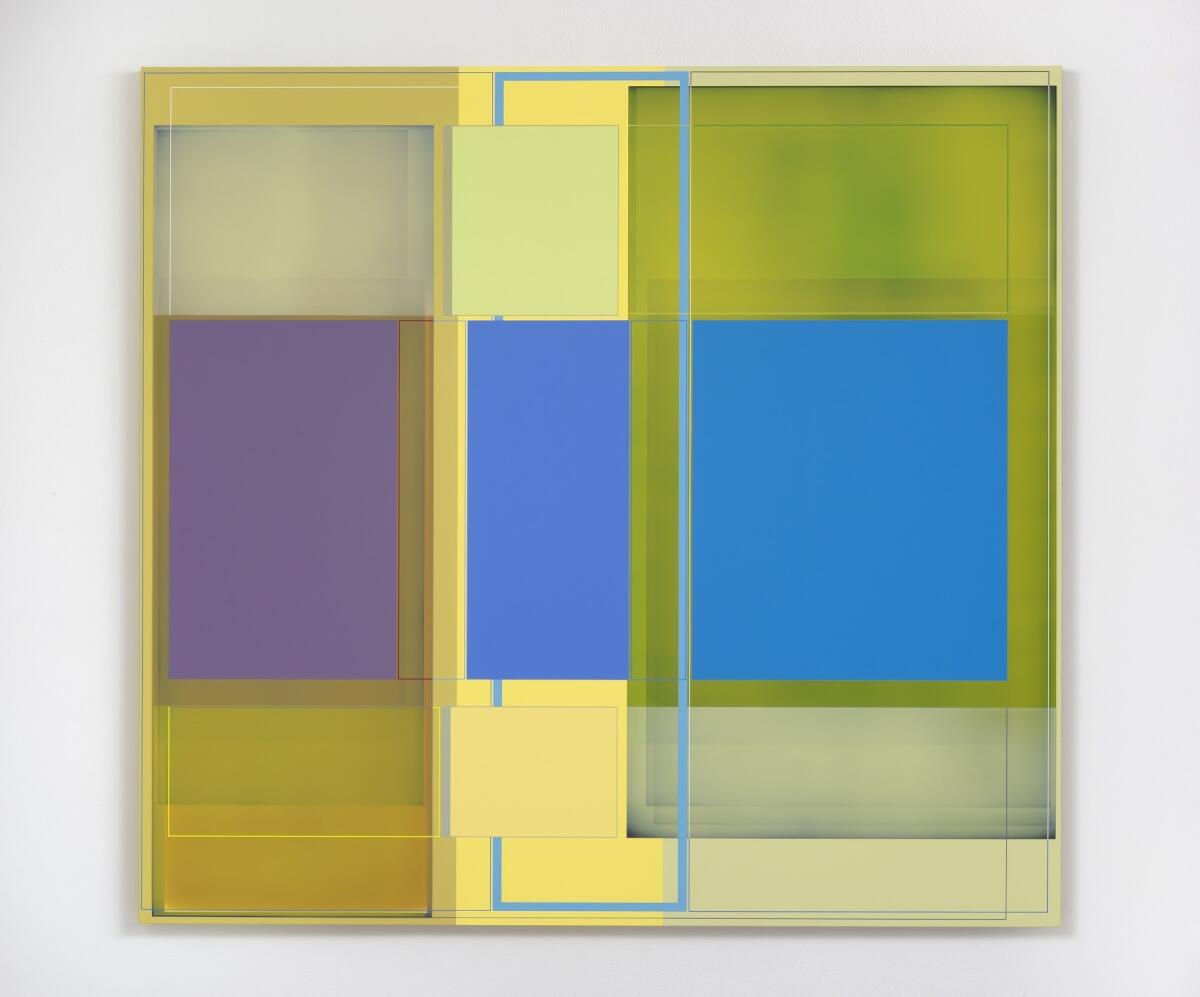Review: When a rectangle is more than a rectangle: Making sense of Patrick Wilson’s colorful chaos
- Share via
If you’ve ever turned to the news and been gobsmacked by what’s going on, you’ll know what it’s like to stand before any of the 14 paintings in Patrick Wilson’s exhibition at Susanne Vielmetter Los Angeles Projects.
Nothing makes sense.
The colors are brash. They clash. They’re unnatural. Even the browns, blues, grays and greens seem to have been modified, their organic palettes exaggerated as if for a performance whose relationship to reality is tenuous. Chaos reigns.
Compositionally, Wilson’s paintings are a mess. Planes and spaces overlap. Not once or twice, but seven, eight, sometimes 10 times.
The various parts do not add up. Resolution is out of the question. It is as if all the windows you’ve opened on your computer after a long search have reappeared as blank rectangles, their ghostly emptiness standing in for lost opportunities, missed connections, unfinished tasks.
But there’s a method to the madness.

If you stop trying to make sense of Wilson’s paintings logically — and let them do their thing — the confusion you initially experience gives way to insights that just might be mind-blowing.
The colors start to play well with one another. Preposterous combinations — lemon meringue, mustard yellow and burnished gold — begin to look good. Garishness gives way to sophistication as lavender and fire-engine red make visual magic.

Each of Wilson’s compositions is made of rectangles. It’s the only shape Wilson has painted for the last 20 years. In his hands, the rectangle is anything but limiting. There’s no end to the variations he massages from it, combining all manner of verticals and horizontals, squat squares and shapes so long and thin they make your eyes race, as if along pinstripes.
Some razor sharp rectangles are as solid as blocks of concrete, suggesting architectural structures. Others are atmospheric, like hazy skies or endless expanses of coastal fog. The most fascinating are both, depending on your point of view as well as what Wilson has placed next to them.
If you look long enough, you eventually see that just about every element in every painting is one thing when you first see it and something else later. Flat shapes become three-dimensional. The background moves to the front. Perspectives shift. Transformation happens.
Wilson invites us to treat our own experiences in the same way he treats the colors and shapes in his paintings — to understand them differently by paying attention to nuance and letting them change. That’s a step in the right direction, whether looking at a painting or following the news.
Susanne Vielmetter Los Angeles Projects, 6006 Washington Blvd., L.A. Through Feb. 24; closed Sundays and Mondays. (310) 837-2117, www.vielmetter.com
See all of our latest arts news and reviews at latimes.com/arts.

MORE ARTS:
Mark Grotjahn declines a MOCA honor, and an art gala becomes more than an art gala
From Minneapolis to Inglewood, the shifting politics of NFL stadium design
The biggest entertainment stories
Get our big stories about Hollywood, film, television, music, arts, culture and more right in your inbox as soon as they publish.
You may occasionally receive promotional content from the Los Angeles Times.







